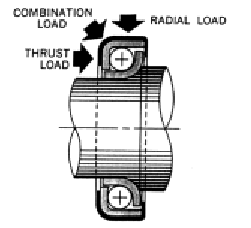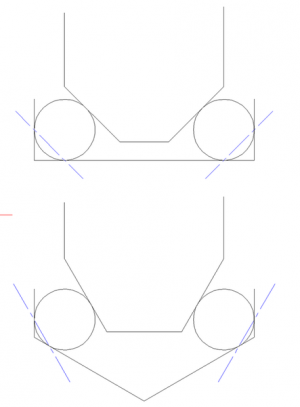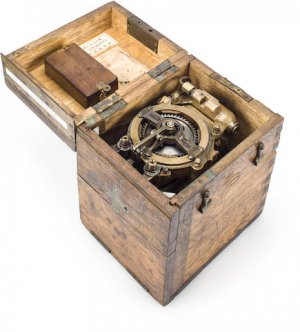- Joined
- Jan 29, 2014
- Messages
- 156
I have a Gyroscope from a WWII Japanese Torpedo that has a very simple bearing.
I would like to research the bearing geometry so I can use it in a project of mine. But I cannot find anything because I do not know what it is called.
Here is how I would describe it:
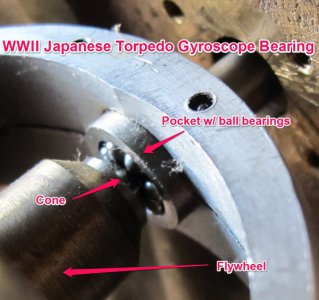
I don't want to dismantle the gyroscope to measure the angle of the cone and to see what the bottom of the bearing pocket is shaped like. I am hoping someone will know what it is called so Google can find the information for me.
So far the following Google searches have not been productive:
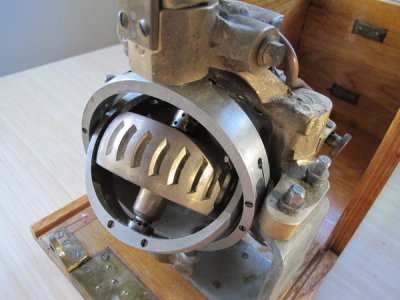
Thanks for your help.
I would like to research the bearing geometry so I can use it in a project of mine. But I cannot find anything because I do not know what it is called.
Here is how I would describe it:
- It is a combination of thrust and axial bearing.
- The shaft supporting the flywheel is turned into a cone on each end.
- The cone rides on 8 ball bearings.
- The ball bearings appear to ride in a shallow flat bottomed hole.

I don't want to dismantle the gyroscope to measure the angle of the cone and to see what the bottom of the bearing pocket is shaped like. I am hoping someone will know what it is called so Google can find the information for me.
So far the following Google searches have not been productive:
- Primitive ball bearing
- Simple ball bearing
- Simple thrust bearing
- Gyroscope bearing
- Pointy shaft ball in pocket bearing

Thanks for your help.


